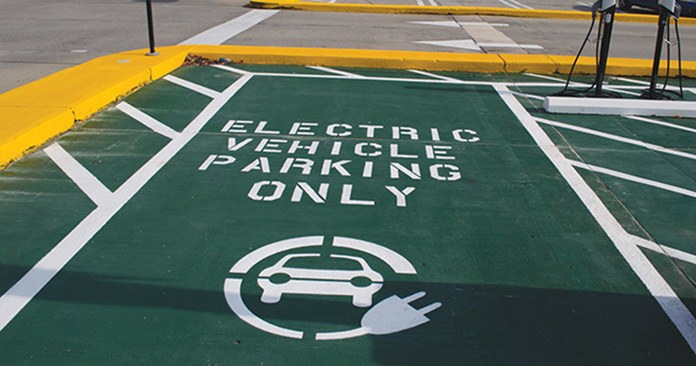VW has been in the (bad) news department this year, but with an eye to the future, VW has been quietly working on electric power plants. If nothing else, it beats the pollution problems. Matthias Mueller, the former chairman of Porsche who replaced Martin Winterkorn at the helm of VW Group in the wake of ‘dieselgate’, said at this year’s Geneva motor show that he expected pure electric vehicle driving ranges of more than 500 km by the end of the decade, with charging times dropping to “the time of a coffee break.”

VW mean business on the EV front, VW has recommitted to its Phaeton flagship sedan, but this time with an all electric powertrain. The Phaeton is one of 20 all-new electric and plug-in hybrid vehicles to be produced across Volkswagen Group’s various brands, including Audi, Porsche and VW, by 2020.
However, VW has gone to the trouble of extending the Phaeton trademark previously applied to their luxury sedan, with much speculation as to why. One theory is that VW has noted Tesla’s success with its home batteries – lithium-ion units to store solar power from home photovoltaic systems – and wants to get in on the action.
It could also mean that it wants to supply its own Phaeton-branded charging points for its new-generation flagship EV.
Another suggestion is that the Phaeton brand might even be applied to a range of VW-produced EVs, like BMW’s i-car range.
The automotive manufacturers have been ‘flirting’ with Electric Vehicles (EV’s) for some time, in occasional fits and starts as yet another oil crisis looms or wanes. This time the impetus is not so much in the fossil fuels are running out, but more that the Middle East, the supplier of much of the world’s crude oil is in disarray, with no signs as to ceasing in the near future.
One of the big advantages of driving fossil fuel-powered vehicles is that it’s easy to find a place to fill up. In the more than a century since the world’s first purpose-built gas station was built in St. Louis, Missouri in 1905, a massive worldwide infrastructure has emerged to keep our vehicles running. As automakers make the move to electric vehicles, early adopters are faced with a lack of infrastructure to keep batteries charged. However, the number of public EV charging stations is steadily growing and Google is now doing its bit to help make tracking them down easier by adding EV charging station location information to Google Maps.
Using data primarily from the U.S. Department of Energy’s National Renewable Energy Laboratory, users can now search a database of nearly 7,000 alternative fueling stations in the U.S., including 600 Electric Vehicle Supply Equipment locations and have the results displayed within Google Maps. For example, searching on Google Maps for “ev charging station near los angeles ca” returns a map of the area with nearby stations highlighted.
One of the key stumbling blocks in the uptake of battery electric vehicles is charging times. After all, who wants to wait eight hours to “fill the tank” when a gasoline, hybrid or hydrogen powered vehicle can be replenished in a matter of minutes.
One way around this recharging problem is to have readily exchangeable fully charged batteries, ready to go. This service was provided between 1910 and 1924 by Hartford Electric Light Company through the General Vehicle Company battery service and during that period vehicles using it covered more than 6 million miles. It was initially available for electric trucks. The vehicle owner purchased the vehicle from General Vehicle Company (GeVeCo, a subsidiary of the General Electric Company) without a battery and the electricity was purchased from Hartford Electric through an exchangeable battery. The owner paid a variable per-mile charge and a monthly service fee to cover maintenance and storage of the truck. Both vehicles and batteries were modified to facilitate a fast battery exchange. In 1917 a similar service was operated in Chicago for owners of Milburn Light Electric cars who also could buy the vehicle without the batteries.
Closer to today, Electric forklifts have used battery swapping since at least 1946, and a rapid battery replacement system was implemented to help maintain 50 electric buses at the 2008 Summer Olympics in China.
Very recently, the battery exchange program was tried by a group called Better Place, but it did not take off as there were not enough EV’s to make it viable.
In the meantime we await to see just what VW are up to this time.




